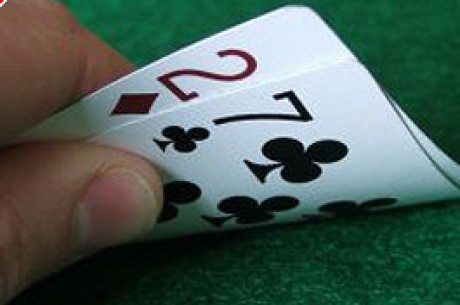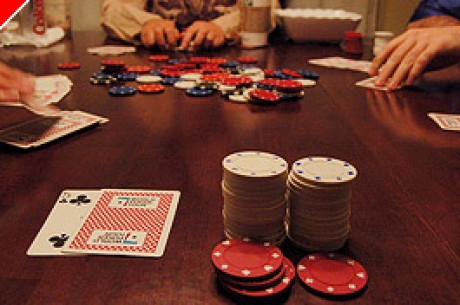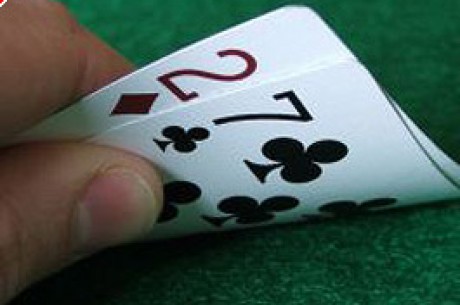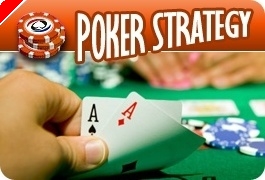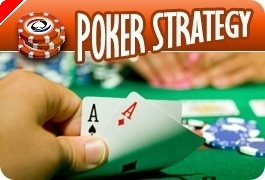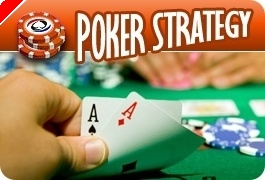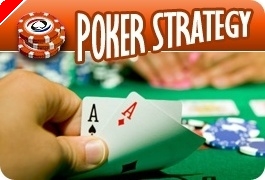Fun Home Poker Game Rules - 7-card Stud, low hole card wild, etc, etc
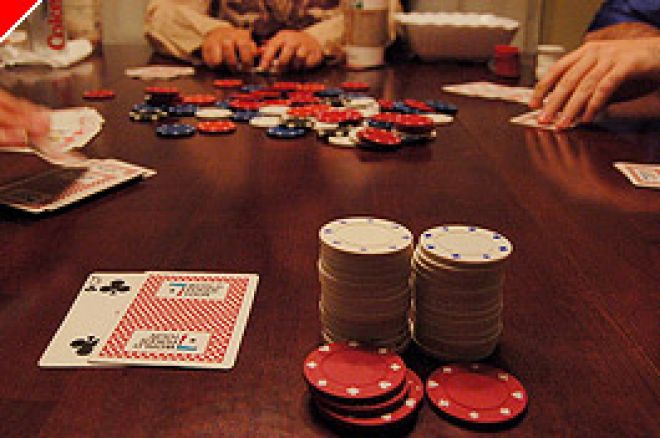
Here it is poker playing guys and gals – the ultimate wild card home poker game. Others are good, some are even great – almost all of them are a ton of fun to play. But this game, in my opinion, is the best one out there.
The name I have given it is a bit unwieldy. Let's call it.
'7-card Stud, low hold card wild, hi-lo, simultaneous declare, bet-declare-bet, spit card on 6th, roll your own, with $10 insurance and no tie.'
OK. I confess. I rarely play wild card games in my home poker sessions any more. The guys and gals that I play with don't like them. Crazy though some of the games they call are, somehow having a wild card – even a lone joker – crosses some invisible line that they're not willing to cross.
But I like these games. I used to play with a very, very wealthy group of venture capitalists, business owners and lawyers who met a couple of times a month in a fancy downtown club in Boston. They liked to play poker. Somehow, I had wiggled my way into their private game. They called me "Union Scum" (I am a union organizer by profession). Sure, it was an insult. I cried all the way to the bank.
While they were conservative in their own business affairs, when it came to poker some of them could get quite loose – especially when wild cards were involved. One of the games they really liked to call was "Low hole card wild". As they declared it, it was, "Low hole wild, hi lo, roll your own, with a spit on sixth and $10 protection on the end". The game was, essentially, 7-Card Stud Hi Low, with a bunch of twists and turns. Let me explain it.
The first variation to the conventional 7-card stud was in the deal. Instead of dealing three cards, with two down and then one up, as you would in normal 7-Card Stud, the dealer dealt all three cards face down. The player would then decide which one to expose. This involves a little bit of strategy. Which card do you expose?
Remember that they played the game high low – meaning that after all the cards were dealt, each player simultaneously declared whether they were going for high (the best standard five card poker hand) or for low, (the worst five card poker hand). So you'd want to think about two things. First, you'd want to make sure that you kept your pairs as your low card in the hole. So with 9-9-3 you'd want to turn up the 3, keeping the pair of 9s in the hole as wild cards. Had you turned over one of the 9s you'd only have your one 3 instead of your two 9s wild.
As is true in all "roll your own" games, you'd also want to consider how your hand would look to your opponents. Players seeing low cards are more likely to think that you are going low. A high card usually indicates that you aren't concerned about getting a low hand but are going high. You can use this to your advantage – hoping to fake an opponent or two – getting them to call the wrong way – either into your monster hand or letting you split the pot by declaring opposite you when you are weak.
The deal progresses as it normally does in 7-Card Stud. On sixth street, however, there's an up card – sometimes called a "spit card" turned up in the center of the table that may be used by all players. This makes the game, in effect, 8-Card Stud – giving every player an extra card. As a practical matter it just makes the average hand values a little higher than they would normally be in this wild card game. You also need to factor in this extra card into everyone's hand when you're considering what they're likely to have. This is especially important with low cards if the spit is a low card. If it's a wheel card (meaning an A, 2, 3, 4, or 5 – one of the cards that makes up a "wheel") then I usually give at least one opponent credit for having a wheel for low. If it pairs someone who's been betting I give him credit for at least four of a kind. But more on that later.
Following the sixth card, each player was given the option of getting their seventh and final card dealt either face down or face up. If they wanted it face up they could pay $10 into the pot as "insurance" or "protection" as it was sometimes called. This allowed them to protect a high card in the hole as their low card. So, using the example from before, if a player had 9-9 in the hole, he wouldn't want a card from Ace to 8 to be dealt down to him – effectively eliminating his two wild card and replacing them with a single wild card. So he'd pay $10 to have the card dealt face up, thus preserving the 9s as wild cards.
While it might seem like the decision would be obvious, I found that it sometimes worked to use this option as a bluff. I might take the insurance and have my last card dealt up, for example, if I wanted to represent that I had a pair in the hole – hoping to convince everyone that I had a very strong hand. You see, by buying protection, I am saying that I don't want my last card to be down because I have a medium or high pair down there that I don't want to ruin it with a lower card. So by paying the $10 I'm gaining the advantage of making it look like I have a monster – even if I don't. I'd use this ploy to convince my opponents, sometimes, that I had a perfect low – to get them to declare high. Or, similarly, if I really did have a wheel for low, I might make this move to convince my opponents that I had a monster for high so they would declare high. This allowed me to scoop the pot sometimes instead of winning just half – or it might allow me to back in to half when I really didn't have the hand to win anything.
The game I played in had a declare, after the seventh card, and then a betting round after the declare. This is where enormous sums of money were won or lost, since the game was not played table stakes and each bet or raise could be as large as twice the last bet or raise.
The ante was $2.00. Typically, players bet $2.00 on the first round of betting (though they could have opened for $4.00). On the second round of betting players usually bet $4.00 – though someone might raise to $10.00 or so. On Fifth Street, someone might open the betting for $20 and there might be a raise by $40 to $60. On Sixth Street, when the common card came out, someone might bet $100. On the River, someone might bet $100 again. Then there would be a declare. If there were three players, the first player might bet $200, someone who was a lock might raise by $400 to $600 and then the hand would be called. As you can see, there was a huge advantage to being the lock in a hi-lo game against two or more opponents. You could bet or raise with complete lack of fear that you'd be beaten. Your only concern would be how much money you'd make. This changed the nature of the game – so much so in fact that in other home games they either disallowed any betting after the declare or they just required that the "lock" call any bets or raises – not being allowed to raise or initiate any betting action. Frankly, I think that's the better way to do things – though I took full advantage of the rules when I was the lock in this game.
There was one other rule variation that made this home game very different from any other I had played in. These guys often declared a game "no tie". This meant that you couldn't end a hand with a tie and then split the pot. If, in fact, you had the exact same five card hand as another player you would go to the sixth card. The hand with the higher sixth card would win the pot. Similarly, you'd go to the seventh card if the sixth cards were tied.
So, for example, in the above game, two players who had declared high had the following hands:
Player A: (3c3d)KsTsTd3d(4c) – he took last card down
Player B: (7c7d)ThJhAhKd6s — he paid insurance and took last card up
Spit card was the 2c
Player A had a royal straight flush – turning his threes into the AsQs and Js.
Player B had a royal straight flush – turning his sevens into the Kh and Qh.
So they were tied. But this was "no tie". So Player A used his sixth card – the Td. Player B used his sixth card – the Kd. Player B won this enormous pot. (I won the low end with a wheel by the way – winning over $1,000 with a "lock" low!)
Let me take you through a typical hand so you can see how this great game plays out.
You're dealt (4h-6c-Ac). You can turn up any card. For determining the low card, Aces can be high or low. You're temped to turn the 6c face up, since you don't want to reveal that you have an Ace (it's a powerful card in a high low game). On the other hand, if you turn the 6c you'll be able to have the 4h as your low card for three suited cards. But, you realize, even if you keep the Ace in the hole, you can declare the 4h as your low card and the Ace as a high card, giving you the same flush possibility. But then your low is A-4-6 rather than A-2-6. (Do you see why? If you turn the Ace face up with the 4 in the hole then the 4, as your low card, can be a 2, giving you Ace 2 6 for low. But if the Ace is in the hole then if you want three low cards the Ace must be low, giving you Ace 4 6 for low.)
You decide to turn over your Ace, giving you, in essence A-2-6 for low and a 3-Flush for high. You see around the table, beginning from your left, 9h, 2h, 7s, Js, Qh, Ad, 3d. The high hand has the option of betting and the other Ace does. The Ad bets $2.00. The 3c calls. The action comes to you. Now in a regular 7-Card Stud 8 or better casino game you'd probably be tempted to raise here. But in this game, with the progressively larger bets and the chance to bet as a lock and all of the cards to come you decide that since you don't have three wheel cards or a pair in the hole or trips to start that you'd be much better off seeing your next card cheaply. So you call – as do all but two of your opponents.
Fourth Street gives you the 2c – a great card. You now have (4h 6c) Ac 2c. You see around the table
2h 5s
Js Jh
Qh 9d
Ad 6s
3d Td
The Jacks have the option of betting. You know he has at least three Jacks – since his low hole card is wild. You figure he may have four of them – with paired hole cards. He bets $4.00. The Qh 9d calls. The Ad 6s calls. The 3c Td folds. It's to you.
You think seriously about raising. You can make it $12. But you also realize that while you have four to a flush and three to a straight flush and four wheel cards, your hand really isn't made. And, until it is, you'd just as soon wait before putting extra money into the pot. The bets will get large enough by the end for you to make a lot of money if you hit your hand. So you call. So too does the 2h 5s.
The next card you get is the 4s. Nice catch. You've paired your wild low card, giving you two wild cards. You now have (4h 6c) Ac 2c 4s. You've made a flush and you now have the second best low possible: A2346 (or "six perfect" as it's known). You also are close to having a Straight Flush – albeit a low straight flush. The 3c, the 5c or the 4d will give you the Straight Flush. Any 3, 4 or 5 will give you the wheel. Any pair or the 4 gives you Quads – albeit low quads. Around the board you see:
2h 5s Ts
Js Jh Ks
Qh 9d 4c
Ad 6s 7d
The Js Jh Ks bets $8.00. The next two hands call. The action is to you. You decide that you should raise. If you get action back at you from the Jacks then you'll presume he already has the Quads and you'll take that into consideration down the road. You also think about the fact that most of these players are too loose to fold once they've called a bet in a round – so you'll be likely to keep nearly everyone in until the spit card on Sixth Street. So you raise $16.
Your raise has a great impact. The next hand, with the 2 and 5, folds. The Jacks don't raise but call, as do the remaining hands. This is ideal for you. You figure that the Jacks are only Trips, not Quads, meaning your low Ace flush might be good for high right now. And you knocked out the only other player who was probable for the wheel – leaving you probably alone for low. Life looks good.
On Sixth Street you get an unhelpful Tc. The spit card is the 8s. You have (4h 6c) Ac 2c 4s Tc 8s
Your opponents have:
Js Jh Ks 8d 8s
Qh 9d 4c 9c 8s
Ad 6s 7d Jd 8s
This gives your first opponent at least Jacks full. He bets $20. The next player, with the pair of 9s, raises by $40, making it $60. The next player calls. Your action.
You have the second best low and draws to the best low and a straight flush. While the spit card didn't improve your hand, it also didn't seem to weaken the strength of your draw – since it doesn't look like anyone improved to a hand that could beat a straight flush. It will also be worthwhile to see if the Jacks reraise – perhaps waiting until this round to exploit quads – or even remotely quints if he had an 8 in the hole. Similarly, the initial raiser might have made Quad 9s but more likely Queens full. Were he an excellent player you'd give him credit for the higher hand. But since he's not a very skilled player you figure he might well be overestimating the value of Queens full, presuming that the Jacks were Jacks Full and not Quad Jacks.
Bottom line: no one can have a better low at this point – and you don't want anyone drawing the perfect low without paying for it. So you raise by $80, making it $120 to the Jacks. They just call as does the Qh 9d 4c and 9c. The Ad 6s hand folds – which you're happy to see – figuring that you just locked up low.
You are sitting to the immediate left of the dealer. So you have the first option of whether to have your last card dealt up or down. You have (4h 6c) Ac 2c 4s Tc. You want to preserve those 4s as wild cards, but you also know that there is no risk to your low by having the card dealt down – since an Ace, 2, or 3 will give you the same low hand as you would have with the 4s wild. But you think about your high hand. At first blush it seems like it would be better if you took your last card up, to keep your 4s as wild cards in making your high hand. But then you realize that the 3 doesn't hurt your high at all – or practically not at all. You'd end up with a flush either way, albeit an Ace King Queen flush with the 4s wild and an Ace King Jack flush with the 3. You decide that this thin advantage doesn't warrant giving up the $10 nor the additional concealment of a final down card. So you take the last card down. It is the 8c. Your opponents all get their last card up. You all have the following hands:
Spit Card: 8s
(4h 6c) Ac 2c 4s Tc (8c)
(x x) Js Jh Ks 8d 7h
(x x) Qh 9d 4c 9c Kd
Your last card was a real bonanza for you. Though you don't have the perfect wheel for low, you have managed to make a well-hidden Straight Flush for high. Converting your two wild cards to the 7c and the 9c gives you the 6c7c8c9cTc Straight Flush. Your opponent with the pair of Jacks is the first to bet. He checks as does the next player. It's now up to you. You have the best possible low and a very strong high hand. You bet the maximum of $160 (double the last bet of $80). Your opponents both call. You figure this is a good sign, since had one of them been Quints or a higher Straight Flush you estimate that they would have raised.
Now it is the declare. You think about only going low. You know you will have a lock on the hand. They will probably check to you as they did on this round of betting. You can bet $320. If they both call you will still win $500 or so.
But you're feeling greedy. If you scoop you'll win well over $1,000.
No chips is low; one chip is high; two chips is both high and low.
You declare simultaneously. Not surprisingly, your opponents both go high. You go high-low.
The Jacks check. The 9s check. You bet $360. They both call.
You turn over your hand. You know your low is good. You wait to see if your 10-high Straight Flush will stand up.
Spit card is 8s
Your first opponent turns over two 5s in the hole. He has: 5h 5s Js Jh Ks 8d 7h. The best high hand he can make is four Jacks. At first you think he can make a King high Straight Flush and then you realize it doesn't quite reach.
Your second opponent turns over 3h 3s Qh 9d 4c 9c Kd. His best high is four 9s. You haul in a monster pot and say to yourself, "Hey, I like this game!"

